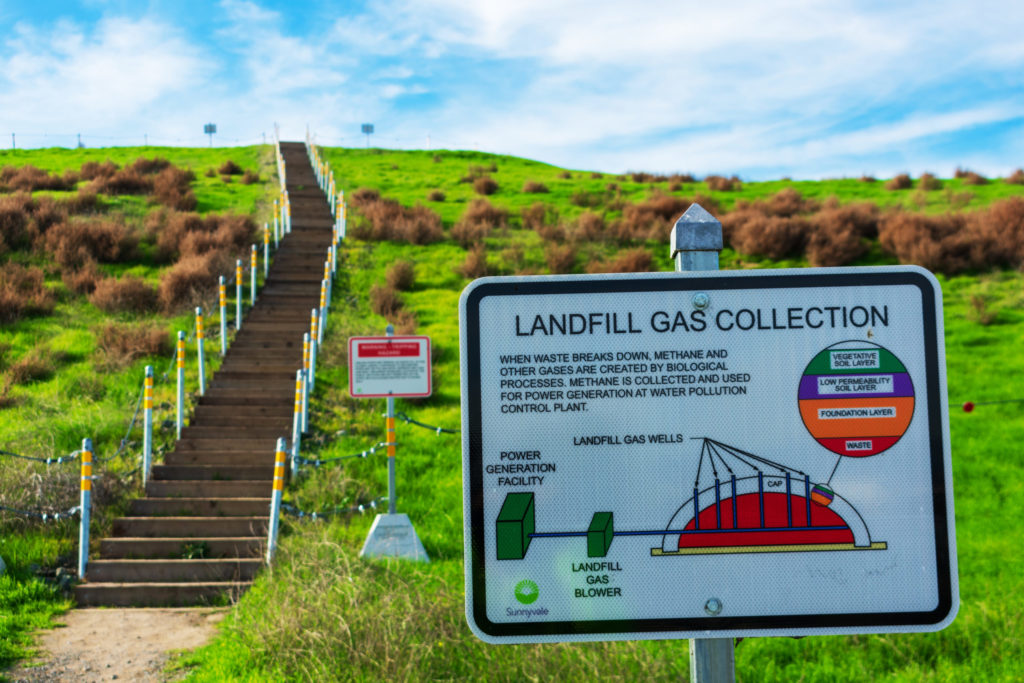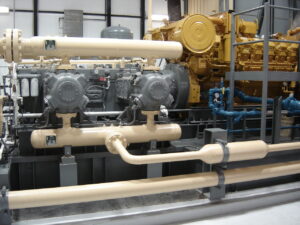As the world becomes more environmentally friendly, there has been a concentrated effort to decrease the amount of waste that is piling up in our landfills. When organic matter breaks down it generates methane and carbon dioxide gasses. Methane and carbon dioxide gasses are greenhouse gasses that trap heat in the atmosphere and contribute to global warming. Landfills are required, by the EPA, to prevent such gasses (landfill gasses or LFG) from reaching the atmosphere. Many landfills simply burn the excess gasses with a large flare, however, this gas can be harnessed for good.
Capturing, converting and using LFG helps to reduce greenhouse gas emissions from the atmosphere. Leveraging the gas and converting it into renewable energy prevents methane from going into the atmosphere, helping prevent global climate change and increasing air quality over all. So how does it all work?
LFG Process
Extracting gas from landfills is not a simple process. LFG collection systems can be vertical wells or horizontal trenches. Using a series of wells and vacuums, gas is collected at a central point of the landfill. The wells drill into the mounds of waste and help extract the gas. The gas is then transported to a collection header using a blower or vacuum induction system. Collection system operators “tune,” or adjust, the wellfield to improve collection. Using LFG in an energy recovery system usually requires some treatment of the gas to remove excess moisture, hydrogen sulfide (H2S), and other contaminants in the pre-treatment stages. The gas is then processed and treated, depending on how the gas is going to be used.
Three Main Uses for LFG
According to the EPA, there are three main LFG energy projects: Electricity Generation, Direct Use of Medium-Btu, and Renewable Natural Gas. The first, Electricity Generation, is the most common for LFG projects, accounting for about 70% of the LFG operations. Reciprocating internal combustion engines is the most commonly used conversion technology, due to the efficiencies in performance, costs, and output gas ranges in landfills.
Others, like turbines, micro turbines, and fuel cells can be used to generate electricity for onsite use and/or sale to the grid, though turbines are typically used in larger projects, while micro turbines are for smaller applications.
The second most common use for LFG is offsetting other fuels like natural gas and coal through Direct Use of Medium-Btu. Landfill gas can actually be used in a boiler, dryer, green house or other application with thermal needs. To do this, the gas is directly supplied for the combustion equipment.
LFG is also a good option for landfills where leachate disposal at a water resource recovery facility is unavailable or expensive. LFG can be used to evaporate leachate, make it more concentrated and easier to discard. Some of the most innovative direct uses of medium-Btu are found in glass blowing kilns, greenhouses, auto manufacturing, food and beverage processing, wastewater treatment, paper and steel production, and even in prisons and hospitals.
The final use for landfill gas is to convert it into renewable natural gas. An abundant asset that more and more organizations are using to help diversify their energy portfolios to assist in balancing environmental, economic, and social needs.
While our landfills are filling up, science and technology has provided us with an opportunity to turn one person’s trash into energy market treasure by capturing and turning it into a renewable energy source through LFG.




